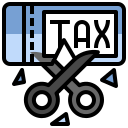Cross-Border and Digital Operations Without Surprises
Sales representatives, co-working desks, and inventory in-country can trigger taxable presence. Map activities, contracts, and agent authority to assess exposure. Simple policy tweaks—like limiting negotiation authority—can reduce risk. Have a new market on your radar? Comment with the country, and we’ll share a starter checklist tailored to mid-market teams.
Cross-Border and Digital Operations Without Surprises
Intercompany services, royalties, and goods need arm’s-length support without overcomplication. Start with a pragmatic method, clear service descriptions, and annual benchmarking. Organize invoices and time logs so the story is audit-ready. Subscribe to receive a concise documentation template designed for busy finance teams with limited bandwidth.








